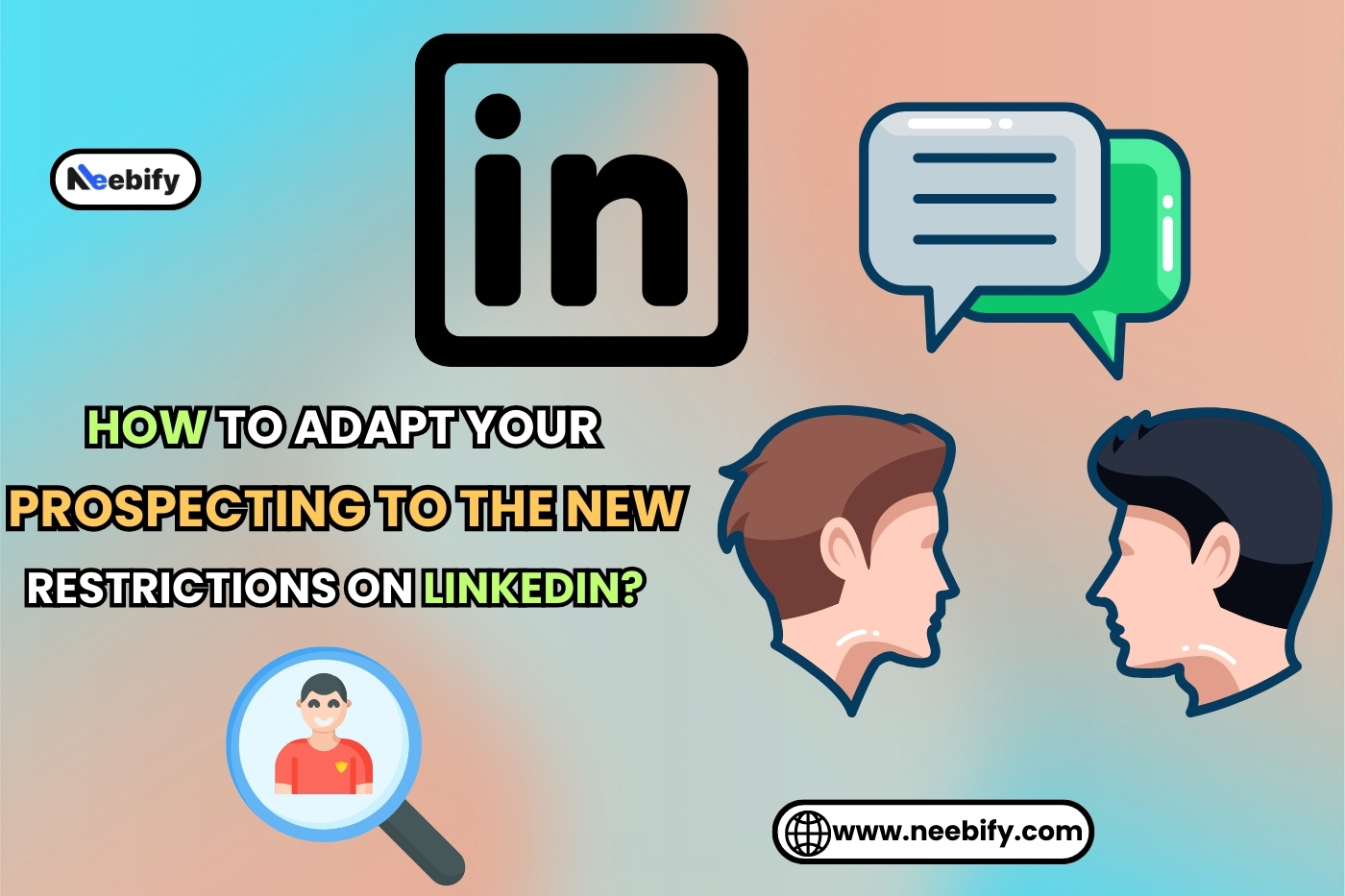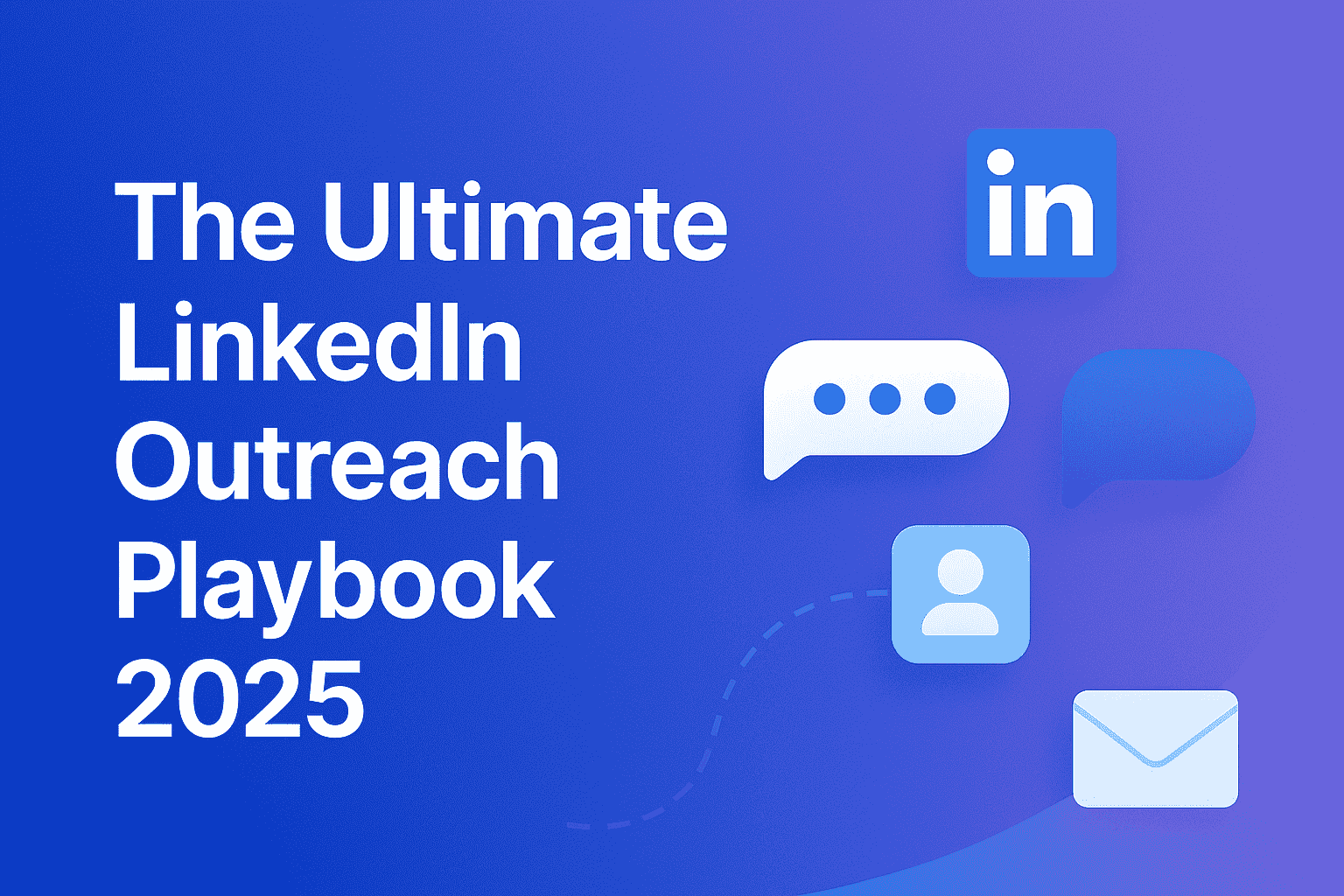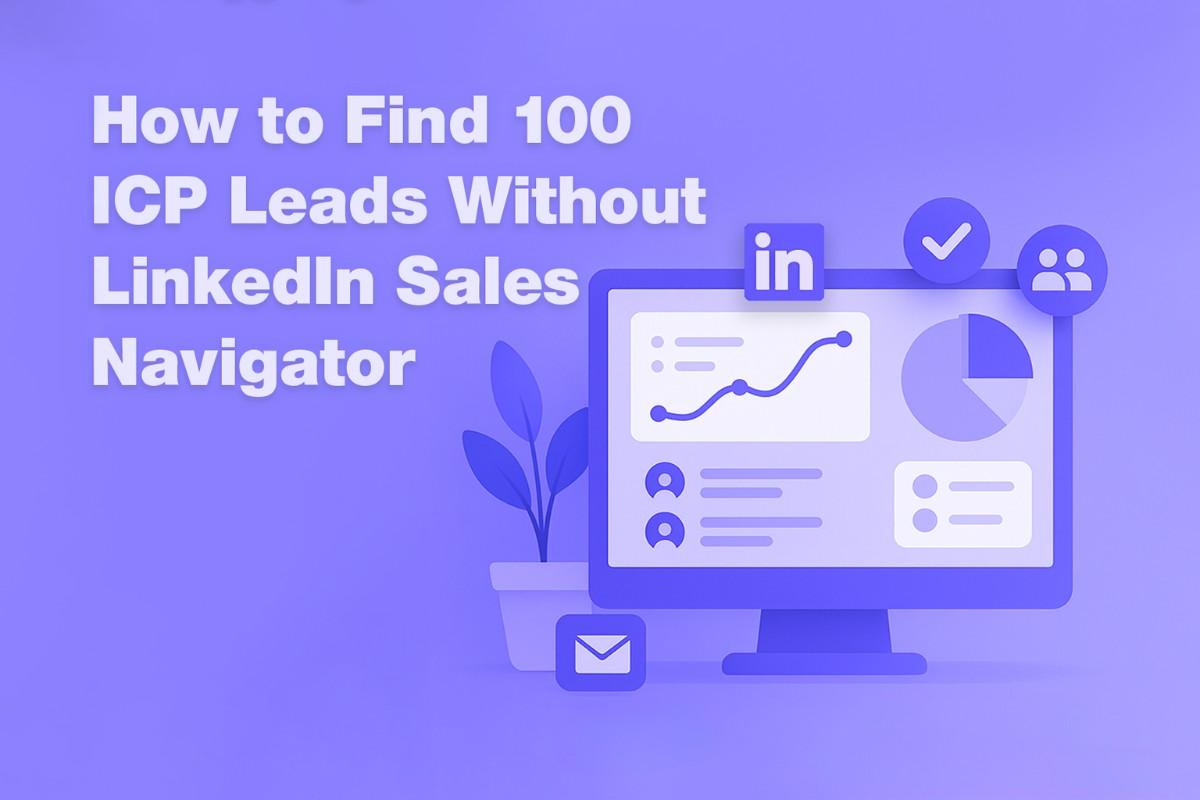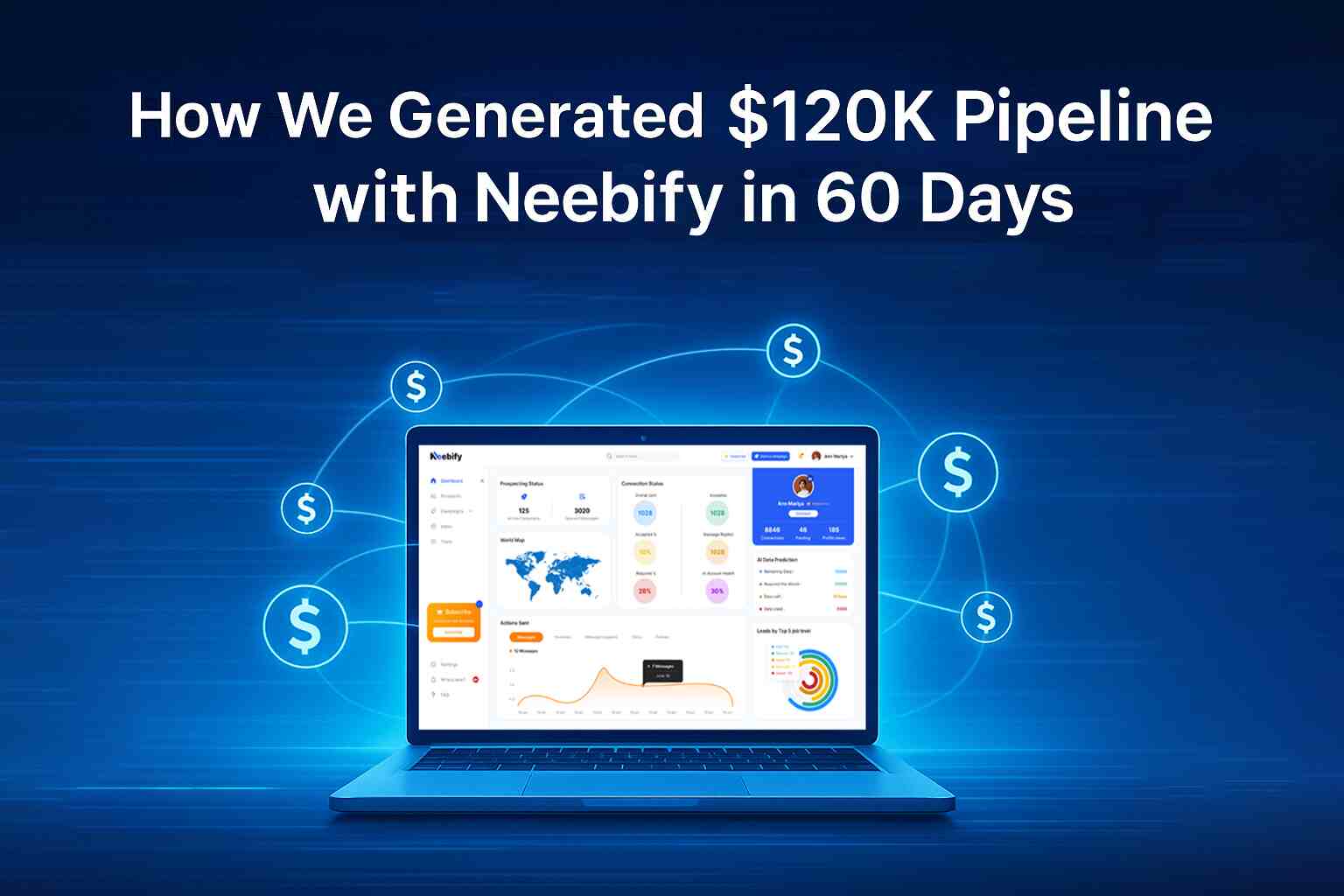Table of content
How to Adapt Your Prospecting to the New LinkedIn Restrictions
LinkedIn has been one of the most powerful tools to be used for professional networking, sales prospecting, and business development. However, LinkedIn's update of its platform has introduced new limitations that affect how users can do outreach and prospecting. And this change poses challenges for every sales professional, marketer, and business development team out there. As LinkedIn prospecting strategies evolve in 2025, it's crucial to understand these changes and adapt your approach accordingly. In this article, we’ll explore the LinkedIn restrictions impact on sales, LinkedIn prospecting strategies 2025, and offer recommendations for prospecting on LinkedIn.
What Are the New Restrictions Announced by LinkedIn?
In 2025, LinkedIn introduced a series of updates that directly affect how users can use the platform for prospecting. These LinkedIn restrictions are designed to limit spam and improve the quality of interactions on the platform. Some of the key changes include:
1. LinkedIn Connection Request Limitations: LinkedIn now limits the number of connection requests a user can send in a week. This has been reduced to 100 connection requests per week, which drastically impacts outreach for sales professionals and business developers. This new rule was brought in to curb aggressive prospecting tactics that clutter the platform and lead to lower engagement.
2. LinkedIn Messaging Policies Changes: LinkedIn has also modified its messaging policies. Controls have become stricter on who can message whom, especially for those with a limited network. The platform has also restricted how many people a user can message without having a direct connection. This has, therefore, created a barrier for cold outreach and broad lead generation tactics.
3. Changes with LinkedIn Sales Automation: The site is now restricting usage of the earlier automation tools used for sending out bulk messages and connection requests. Sales automation has been a game-changer for many LinkedIn users, but such changes are intended to reduce spammy behaviors and ensure a more personal experience.
4. LinkedIn Outreach Best Practices: With these new LinkedIn prospecting restrictions, businesses and sales professionals need to adopt more refined and strategic outreach methods. This includes personalizing messages, limiting automation, and focusing on relationship-building strategies.
Why Is the 100 LinkedIn Invitation Limit Scary?
The 100 LinkedIn invitation limit is a notable change that worries many LinkedIn members, especially those who depend highly on large-scale prospecting campaigns. In the past few years, salespeople sent hundreds of connection requests on a daily basis to expand their networking as fast as possible. However, this new rule compels salespeople to be more intentional with reaching out. Here's the reason why this new limit becomes scary:
1. Reduced Reach: Sales professionals and marketers who relied on bulk outreach now have to be more strategic. They need to prioritize high-value prospects, which may reduce the number of potential leads they can reach out to on a weekly basis.
2. Slower Growth: The LinkedIn connection request limitations slow down growth for businesses looking to quickly scale their operations or generate leads; expansion of a network now requires a more measured approach, with waiting to send connection requests likely to delay sales cycles.
3. Quality vs. Quantity: This limit might make professionals focus on quality rather than quantity, but it also results in fewer leads. The salespeople are under pressure to write the perfect, personalized connection requests that will stand out in a crowded inbox.
Recommendations for Prospecting on LinkedIn
Given these changes, how can you adjust your LinkedIn prospecting strategies for 2025 to stay effective and competitive? Below are some LinkedIn prospecting tips for 2025 to help you adapt to these restrictions and continue generating high-quality leads:
1. Personalize Connection Requests: Now that the LinkedIn invitation limit is set at 100 per week, each one counts. Personalize each outreach message to show why connecting with you will be valuable. Avoid generic templates and be specific about how you can help or collaborate.
2. Meaningful Conversations: Engage with posts, comments, and articles that your target audience finds interesting, rather than sending dozens of connection requests. This will help you establish rapport before reaching out to the person directly, making the lead warmer if you do send a request.
3. Use LinkedIn Sales Navigator: Use LinkedIn prospecting tools 2025 like LinkedIn Sales Navigator to overcome the LinkedIn prospecting restrictions. It provides more advanced filtering and targeting options, which will help you to find and reach out to very relevant prospects without generic outreach.
4. Relationship building: Rather than just using LinkedIn as a cold outreach platform, one should nurture his relationships within the existing circle by engaging with whatever his connections post. Deeper connections yield more referrals and more engagement.
5. Use LinkedIn Groups: LinkedIn Groups is still one of the most useful tools for networking and prospecting. Find groups relevant to your industry and join in on conversations with people who could be potential leads. It is another way to engage besides sending connection requests.
6. Adopt Multi-Channel Prospecting: LinkedIn should no longer be your only outreach tool. Incorporating email, social media, and even phone calls can help you break through the noise and maintain consistent communication with your prospects. Multi-channel outreach is now more essential than ever.
What Indicators Should I Look at to Evaluate My LinkedIn Prospecting?
As LinkedIn prospecting is getting tightened, it is essential to monitor effectiveness. Here are some measures to measure the success of LinkedIn prospecting under new policies:
1. Connection Request Acceptance Rate: Monitor the acceptance rates of your connection requests. Consider improving your messaging or targeting approach if this rate is declining seriously.
2. Engagement Rate: Monitor how many people engage with your posts and messages. It is a high engagement which means that your outreach must be resonating with your targeted audience.
3. Lead Conversion Rate: The bottom line of lead prospecting is converting leads into clients or customers. Measure how many of your connections result in meaningful conversations or sales.
4. Response Rate to Messages: Track how many messages you send are responded to. High response rates can help you figure out if your messaging strategy fits the interests of your audience.
What does Neebify offer in regard to the LinkedIn restrictions?
For businesses struggling with the LinkedIn restrictions impact on sales, platforms like Neebify offer solutions to streamline LinkedIn outreach. Neebify offers tools that help users adapt to the changing landscape by providing:
- Automated workflows that stay within LinkedIn’s new rules
- Advanced targeting features to ensure you’re reaching the right prospects
- Insights and analytics to track outreach success and optimize performance
These tools enable businesses to continue adapting LinkedIn outreach methods without violating the rules and guidelines of LinkedIn.
What Would Be the Future for Cross-Channel and Cold Email?
With LinkedIn and email becoming more restricted, the future of cross-channel prospecting and cold email is changing. If email is saturated and you're experiencing LinkedIn prospecting limitations, it's time to diversify your strategy. Here are some trends to watch:
1. Greater Dependence on Multi-Channel Outreach: As more platforms get more strict in their policies, marketers and sales teams are reaching prospects via multiple channels, which also includes cold email, SMS, and even direct mail. Cross-channel strategies have become not a luxury but a necessity for healthy sales pipelines.
2. Quality Over Quantity: Both LinkedIn and e-mail are limited, and quality outreach rather than bulk e-mails and spamming will be used more as outreach. Content will be specific to the recipient, and it will be done in a manner of thoughtful engagement.
3. Social Media and Content Marketing Integration: The future of prospecting is integrating content marketing with outreach strategies. Publishing valuable content on LinkedIn then following up with personalized messages can create a powerful, multi-touch approach.
Is Multi-Channel Optional, or Is It Becoming a Necessity?
With the increasing restrictions on LinkedIn and email, multi-channel outreach is no longer a nice-to-have but rather a necessity. Diversifying your channels, whether through LinkedIn prospecting tools 2025, cold email, SMS, or even direct mail, will prevent you from relying too heavily on any one platform. Multi-channel strategy increases your chances of reaching and engaging prospects, and you can continue to sell to them despite restrictions.
Conclusion
Adapting your prospecting strategies to LinkedIn prospecting restrictions is very important in the current sales environment. As much as LinkedIn lead generation strategies 2025 have evolved, professionals can still thrive by focusing on quality over quantity and a combination of personalized outreach, tools, and multi-channel approaches. By understanding LinkedIn prospecting tips for 2025, leveraging advanced tools, and diversifying your outreach methods, you can navigate this new landscape and continue building those valuable relationships on LinkedIn.
Get your next meeting in a
matter of minutes.
Free Trial
Latest
The Ultimate LinkedIn Outreach Playbook 2025
A practical, modern guide to mastering LinkedIn outreach in 2025 — learn how to boost reply rates, p
12/1/2025How to Find 100 ICP Leads Without LinkedIn Sales Navigator
Generating 100 targeted ICP leads doesn’t require LinkedIn Sales Navigator. Learn how to leverage fr
11/28/2025


